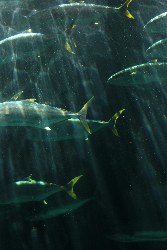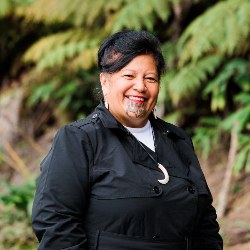Freedom from Hydatids function, Wellington
Damien O’Connor
Speech Notes
7 October 2002
Freedom from Hydatids function, Wellington
Ladies and Gentlemen: thank you for being here tonight,
because this really is something to celebrate.
I'm not of the generation that suffered the scourge of hydatids. But when I was at Lincoln University, some years ago now, they used to show a video about surgery on a hydatids sufferer.
You can imagine this big university lecture theatre, full of tough young country men and a few young women, watching this film of a young boy having his stomach sliced open, and the cyst being carefully lifted out?. Actually, that part was ok. It was when they sewed his front back up and then rolled him over to slice open his back to get another cyst, that many of us made a run for the door.
Hydatids is a horrible disease, with terrible effects on animals and people. So to achieve freedom from it is significant.
We're one of the few countries in the world to achieve this success. Globally, hydatids is widespread and eradication has only been achieved in other geographically remote island territories including Iceland, the Falkland Islands, Cyprus and the Australian state of Tasmania.
The successful eradication of this particularly nasty parasite is thanks to 45 years of hard work by a range of dedicated individuals and organisations. It is also the result of considerable effort by the nation's farmers and dog owners over the years.
Thanks should go to the teams of hydatids control officers employed by local authorities around the country. These officers tested dogs for the parasite at dog dosing strips around the country. In the later years of hydatids control, the officers were responsible for dosing all the dogs in the country, whether the working farm dog or the urban pet pooch. And the hydatids officers ran extensive public education campaigns, including public displays, and instruction in schools about the parasite and how it spreads.
Meat inspectors at the country's meat works and slaughterhouses, kept a vigilant eye out for cysts in slaughtered stock (and continue to do so)? and MAF laboratories have provided a diagnostic service, confirming where and when cases have been detected.
And the country's farmers have helped win the war against hydatids, with their compliance with regulations to ensure the safe feeding of their dogs and consequently the breaking of the hydatids tapeworm life cycle.
Since 1946, the highest number of people per year in New Zealand who were hospitalised with hydatids was 103 in 1953. This compares with seven cases notified to the Ministry of Health in 2001. These people were aged between 44 and 72 and would have caught the infection as children, with the disease causing problems many years later. New infections have been rare since the 1970s.
The last true outbreak of hydatids was in Central Otago in 1990. Since then there was a minor outbreak in 1995 in three sheep from one property on Arapawa Island. 1999 was the first year that no hydatids cases were detected at slaughter in New Zealand-born animals. And in 2001, no new cases were detected in any animals at slaughter.
MAF has opted for declaring 'provisional' freedom only at this stage. Given the long life cycle of the disease, it would be premature to say we're totally in the clear. If, after five years of animal screening, we find no further evidence of hydatids, we will be able to make a case for what's known as 'full country freedom'.
Finally, ladies and gentlemen, I'd like to pass on the apologies of Agriculture Minister Jim Sutton. He had hoped to be here, but unfortunately ministerial duties have kept him at Parliament. This celebration has particular resonance for him because of what he has seen in recent visits to China.
There, hydatids is still a significant threat to human health. There are hospitals ? many of them ? devoted solely to treating people with hydatids cysts.
I know there is research going on in New Zealand that may well provide a key component in helping the Chinese reduce the threat of hydatids to their people.
Crown research institute AgResearch has developed a vaccine for hydatids ? only the world's second vaccine against parasites.
Because New Zealand was virtually free of hydatid disease by 1992 when the vaccine was developed, it was not needed here.
It was decided to commercialise the technology for the rest of the world, where hydatid disease was not responding to control.
That commercial vaccine is now in the process of being registered in China, and is being readied for Uruguay. Field trials are under way in China, Argentina, Chile, Italy, Israel and Romania, and are being considered in Tunisia, Algeria, Morocco, Turkey, Iran, Kazakhstan and Uzbekistan. Tremendous potential is here, not just for commercial gain for New Zealand, but for the benefit of a large proportion of humanity.
This is an example of the innovation in the New Zealand rural sector that the Government would like to see more of.
Ladies and Gentlemen: once again, on behalf of all New Zealanders, I want to thank everyone involved in the eradication of hydatids for all their hard work. Congratulations.
ENDS


 Gordon Campbell: On bird flu, AUKUS entry fees and Cindy Lee
Gordon Campbell: On bird flu, AUKUS entry fees and Cindy Lee NZ Government: New Lab To Help Protect Key Pacific Tuna Fisheries
NZ Government: New Lab To Help Protect Key Pacific Tuna Fisheries Susan Botting - Local Democracy Reporter: Ruawai Leader Slams Kaipara Council In Battle Over $400k Property
Susan Botting - Local Democracy Reporter: Ruawai Leader Slams Kaipara Council In Battle Over $400k Property Te Pati Maori: Another ‘Stolen Generation’ Enabled By Court Ruling On Waitangi Tribunal Summons
Te Pati Maori: Another ‘Stolen Generation’ Enabled By Court Ruling On Waitangi Tribunal Summons Peace Action Wellington: Die In for Palestine Marks ANZAC day
Peace Action Wellington: Die In for Palestine Marks ANZAC day Labour Party: Penny Drops – But What About Seymour And Peters?
Labour Party: Penny Drops – But What About Seymour And Peters? Government: PM Announces Changes To Portfolios
Government: PM Announces Changes To Portfolios


